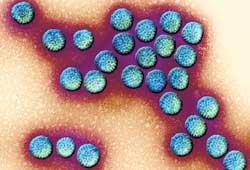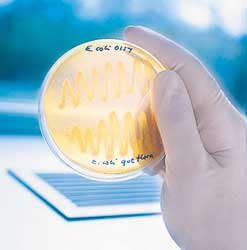
| Diarrhoea: How to tackle this common condition When young children come down with diarrhoea, it seems to be just as frustrating, uncomfortable and messy for their parents as it is for them. Unfortunately, it is practically guaranteed that every child will go through an episode or two. Here Dr. Deepthi Samarage, Consultant Paediatrician, explains what you can do to protect your child and to ease his or her discomfort. Symptoms, causes and treatment Describing diarrhoea as "loose motions commonly linked with infections," Dr. Samarage explains that while an average child might visit the toilet once a day, a child with diarrhoea may be forced to use the toilet even up to 8 - 10 times. "This may be accompanied by vomiting, fever and stomach pain in certain cases," she says.
"It is a common condition," reveals Dr. Samarage, going on to add that it is rare, however, in breastfeeding children. It is only when children are introduced to normal food that such episodes occur. Diarrhoea is a symptom, not a disease, and as such can be caused by two main agents, she says, one being viral and the other bacterial. Among them the most common viral infection is rotavirus. Symptoms of such an infection generally persist for three to five days. Bacterial based diarrhoea on the other hand is caused by bacteria like E.Coli or Shigellae. Though viral infections most often result in watery stools, of the two causes, the bacterial infection tends to be the more severe. Diarrhoea in the latter is often accompanied by blood and mucus and is less watery. On many occasions a doctor will not prescribe any antibiotics as in most cases of viral diarrhoea symptoms will settle within a few days or so as the immune system clears up the infection, says Dr. Samarage. While doctors will sometimes attempt to reduce the frequency in adults, the problem must be allowed to run its natural course in children and no attempt is made to stop or reduce the frequency of diarrhoea. When should you take your child to the doctor? If it is a case of one or two instances of diarrhoea in a day, you can have your child stay home and make sure you keep him or her rehydrated. However, if the frequency is higher and it is accompanied by fever and vomiting, it is advisable to consult a doctor. The occasional cases of chronic diarrhoea (which lasts over 14 days), however, will need investigation to determine the causes. Dehydration Dehydration (low body fluid) is one of the most dangerous consequences of diarrhoea. Yet it is also very simple to avoid. If a child's lips become dry, their eyes become sunken, if they pass less urine, their thirst increases and if they appear lethargic, you will know they are becoming dehydrated.
Aim to prevent dehydration, or at least to treat dehydration if it has developed - this means that you must ensure your child drinks a sufficient amount of liquids. To prevent dehydration purchase an electrolyte such as Jeevani and use it to rehydrate the child. Dr. Samarage offers a rough estimate of how much is required saying 2 ounces is a good quantity to feed a child after a small amount of loose motion is passed, whereas after a large amount, the quantity of electrolyte should be increased to 3 ounces. Home-based liquids such as thin fruit juice are recommended. Kunji, will also help. However, it is best not to give the child a drink that contains a lot of sugar, as in the case of aerated drinks. Diet Aside from foods rich in fat or butter, your child can eat what he or she normally eats, says Dr. Samarage, explaining that that it is essential that the child continue to be given food. Just because it appears that everything your child swallows comes out at once, do not stop feeding him or her. What you can do at home While it is difficult to protect your child from viral causes of diarrhoea, proper storage, preparation and cooking of food, combined with good hygiene eliminates much of the risk of bacterial based diarrhoea, says Dr. Samarage. Make sure you always wash your hands, and that your children are taught to wash theirs especially:
|
|| Front
Page | News | Editorial | Columns | Sports | Plus | Financial
Times | International | Mirror | TV
Times | Funday
Times | MediScene || |
| |
Copyright
2006 Wijeya
Newspapers Ltd.Colombo. Sri Lanka. |

